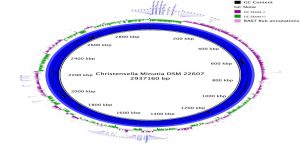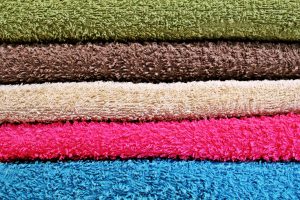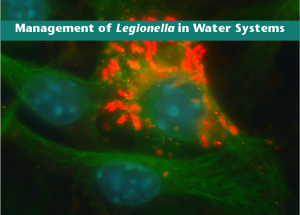A new viral disease surveillance tool: Indoor dust as a matrix for surveillance of COVID-19, published in mSystems. Throughout the COVID-19 pandemic, large scale monitoring of SARS-CoV-2 has helped to prevent spread and inform public health decisions. This has largely been done through individual sampling (ie nasal and saliva sample collection) and through environmental surveillance …
We are pleased to announce the publication of our manuscript titled “Modeling microbial growth in carpet dust exposed to diurnal variations in relative humidity using the “Time-of-Wetness” framework” in the journal Indoor Air. This work is a culmination of research investigating how changes in relative humidity impact microbial growth in carpet dust. Our related study …
So this work is a spinoff of a big project that we were involved in (but almost all of the work was done by Amy Pruden’s lab at Virginia Tech). In the larger project, they examined the genomes of over 100 clinical isolates of Legionella pneumophila, as well as 10 clinical isolates from patients during …
So way back in 2014 a really interesting paper came out about a family of bacteria called Christensenellaceae, which was found to be the most heritable group in the human gut microbiome. Furthermore this group (represented by Christensenella minuta) was furthermore associated with low BMI. Most intriguingly, mouse work demonstrated that the injection of cultured …
Another really interesting paper from Maria Dominguez-Bello and her lab and colleagues, “Home chemical and microbial transitions across urbanization”. They’ve done some fascinating work in the past on the microbiome changes across an urbanization gradient and here they expand that work to include a bunch of chemistry data. Definitely worth a read for anyone interested …
Carpets are a favored flooring type. They can be soft, cozy, and warm – and help with keeping noise levels down. Carpet can even help prevent injury. While these attributes are well recognized, what is less known is how carpet compares with other flooring types in affecting your indoor environmental exposures. To help address this …
This is a pre-print that just came out from several UC Davis colleagues. I actually think the title is a bit misleading because these recommendations are a lot broader than just human fecal metagenomes. Definitely worth a read! Abstract below: Background Shotgun metagenomes are often assembled prior to annotation of genes which biases the functional …
~15 years after the first project was funded, the Sloan “Microbiology of the Built Environment” program has pretty much wrapped up. Here at microBEnet, we wanted to take a deeper look at the impact of the program on the published literature in the field. There were over 300 publications from the program through the end …
Register Here Please join the National Academies of Sciences, Engineering, and Medicine on August 14th from 11:00am-12:30pm EDT for the release of the report, Management of Legionella in Water Systems. The report examines what is known about Legionella occurrence in water systems, and makes recommendations for managing bacterial growth in these environments in order …
How microbial profiles differ between water-damaged and dry buildings is not well known. It’s only logical that where moisture is available indoors, microorganism will grow. Yet, measured microbial products do not show consistent differences between wet and dry homes. Because wet homes are associated with a variety of health risks, it’s important to identify the …



